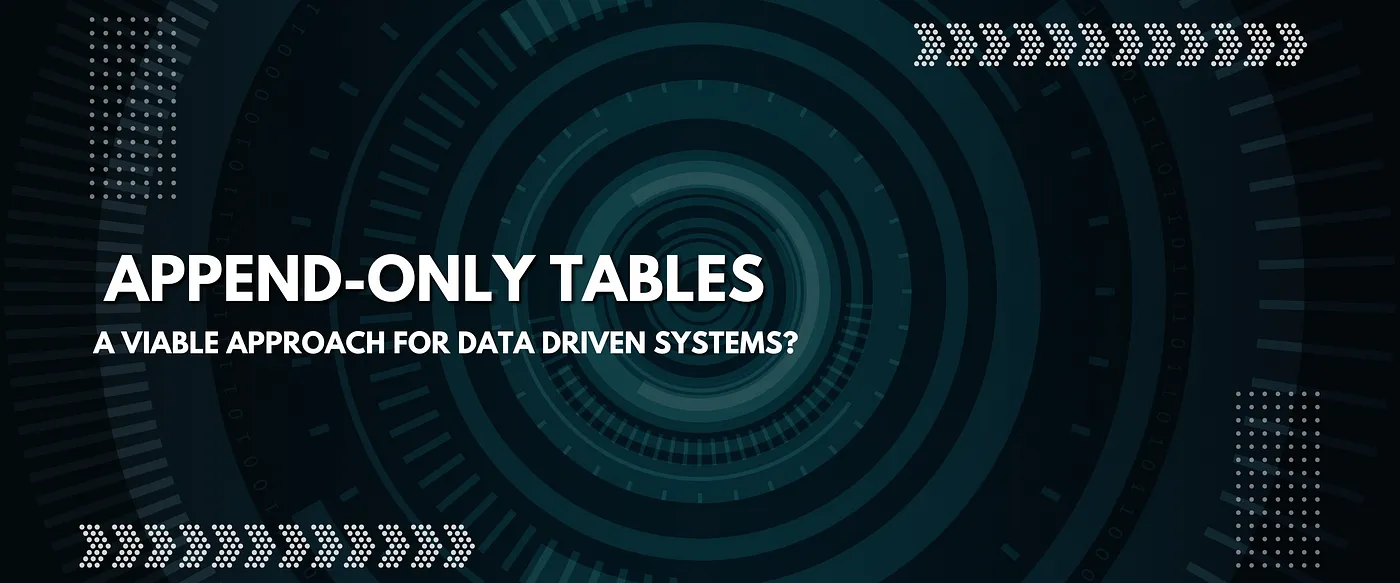
In the software development world, Domain-Driven Design (DDD) and Event Sourcing have become rather popular because they provide effective frameworks for creating scalable and maintainable systems. Using append-only files in databases is an interesting way to simplify the persistence layer in this situation. Developers can avoid the complications involved with conventional Object-Relational Mapping (ORM) solutions by persisting events in a single table and depending on them to reconstruct the application state. We will examine the potential of this method and talk about how it simplifies DDD’s persistence layer in this article.
Developers can replay the events sequentially to reconstruct the application state […] allows developers to extend their domain models without having to deal with the headaches of database schema migrations, and it also makes debugging and auditing easier.
The Append-Only Advantage
To maintain data consistency, the conventional relational database model frequently calls for elaborate update procedures and sophisticated schema designs. The append-only method, however, provides a more straightforward option. In this case, new records are appended to an existing table with each modification of the state, reflecting events that signify changes in the state.
Event Sourcing in Action
A key idea in DDD is event sourcing, which is the process of constructing an application’s whole state from a series of events. This translates into recording each state transition as an immutable event in the context of database persistence. These events provide a thorough audit trail for the history of the application by capturing the purpose and context of modifications.
Developers can replay the events sequentially to reconstruct the application state at any given time by saving the events in an append-only table. This allows developers to extend their domain models without having to deal with the headaches of database schema migrations, and it also makes debugging and auditing easier.
Simplifying the Persistence Layer
The persistence layer is made simpler by the append-only file strategy, which does away with the need for intricate update procedures. There is no need to edit records that already exist because every state change is represented as an event and appended to the table. This removes common problems with updating records, like managing indexes, performing cascading updates, and guaranteeing data consistency.
Additionally, this method adheres to the immutability rules, which facilitates reasoning about the behavior of the system and lowers the possibility of adding subtle errors. Additionally, it offers a distinct division of responsibilities since the aggregate root handles event processing and state maintenance on its own, minimizing the need for outside components to maintain data consistency.
Scalability and Performance
The efficiency and scalability of a system can be greatly enhanced by the append-only model. Write operations become extremely efficient and contention issues associated to updating existing records are reduced because events are continuously appended to the table. Because of this, the method works especially well for systems that need strong audit capabilities or have a large write throughput.
In conclusion, leveraging append-only files in the context of DDD and Event Sourcing offers a compelling alternative to traditional ORM-based persistence layers. By embracing the simplicity of storing events in a single table, developers can streamline the management of application state, simplify debugging and auditing, and enhance system scalability. This approach aligns seamlessly with the principles of immutability and event-driven architectures, empowering developers to build more resilient and maintainable systems.